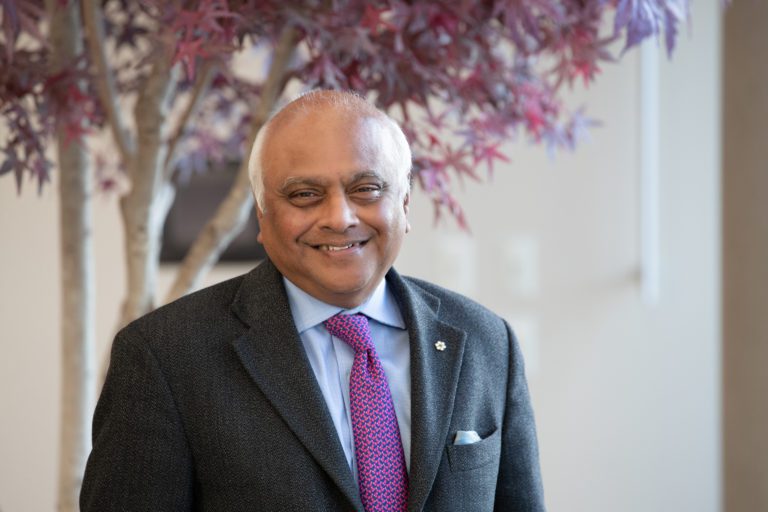 Researchers at the Population Health Research Institute (PHRI) have received IDE approval from the FDA for the design of a major study to determine if using the WATCHMAN FLX™ Left Atrial Appendage Closure Device in combination with oral anticoagulation provides superior stroke risk reduction in high-risk patients with atrial fibrillation compared to oral anticoagulation alone.
Researchers at the Population Health Research Institute (PHRI) have received IDE approval from the FDA for the design of a major study to determine if using the WATCHMAN FLX™ Left Atrial Appendage Closure Device in combination with oral anticoagulation provides superior stroke risk reduction in high-risk patients with atrial fibrillation compared to oral anticoagulation alone.
The LAAOS-4 trial will enroll patients with AF who have a high risk of stroke due to AF despite already receiving anticoagulant medication. Investigators feel that there is strong rationale to support testing the combined use of these two therapies to reduce the risk of stroke.

WATCHMAN FLX™
This trial is based on the LAAOS-III trial that showed surgical closure of the left atrial appendage at the time of open-heart surgery reduced stroke on top of anticoagulant therapy. LAAOS-III enrolled patients coming for heart valve or bypass surgery and randomly assigned patients to have their LAA occluded or removed surgically at the same time. LAAOS-III demonstrated a large reduction in stroke with LAA removal.
The LAAOS-4 clinical trial will begin enrollment in mid-2023 and will be conducted at 250 hospitals in 15 countries. LAAOS-4 intends to enroll 4000 patients with AF who are already taking an oral anticoagulation (either warfarin or a factor Xa inhibitor). All patients will continue on their blood thinners for the duration of the trial. Patients will be randomized to receive or not receive a WATCHMAN FLX device. Those who receive the WATCHMAN FLX device, will have it inserted into the heart non-surgically through a vein in the leg. Patients will be followed for four or more years to determine if the WATCHMAN FLX device is more effective at reducing ischemic stroke compared to oral anticoagulation alone.

Dr. Jeff Healey
“If positive, the results of our trial will create a new paradigm of combining mechanical and medical strategies to prevent stroke among patients with AF who are at higher risk of stroke,” says study PI Dr. Jeff Healey, Senior Scientist at PHRI, of McMaster University and Hamilton Health Sciences. The PHRI’s scientific leadership of the study includes Drs. Sanjit Jolly, Richard Whitlock and Stuart Connolly, who is chair of the steering committee.
Over the past three decades, researchers at PHRI have played a major role in reducing the risk of stroke among patients with AF using anticoagulant medications and were pioneers in proving that removal or occlusion of the LAA can reduce this risk as well.
“Despite the availability of safe and effective anticoagulant medications, the risk of stroke remains elevated in a significant proportion of patients with AF. While medications are effective, patients may miss doses, take them incorrectly, interrupt treatment due to trauma or injury, and after four years, more than one-third of individuals have stopped taking the medications completely,” says Dr. Connolly.

Dr. Stuart Connolly
Drs. Whitlock and Connolly published the LAAOS-III trial in the New England Journal of Medicine in 2021. It was the first trial ever to show that LAA occlusion reduces the risk of ischemic stroke. Whitlock says, “the results of LAAO-III strongly suggest that a non-surgical approach using the WATCHMAN FLX device could prevent more strokes than anticoagulants alone in higher-risk individuals with AF.”
Dr. Jolly, who presented on the rationale of the LAAOS-4 trial at the Cardiovascular Research Technologies (CRT) meeting in Washington D.C. in late February 2023, says “as both atrial fibrillation and stroke risk increase as we age, we have a real opportunity to significantly reduce the burden of stroke in our society.”
LAAOS-4 is funded by a grant from Boston Scientific Corp, who has been the global leader in developing a less invasive approach to occlude the LAA.

Dr. Ken Stein
“Complementing the portfolio of ongoing clinical trials for the WATCHMAN FLX device, LAAOS-4 is the first randomized trial to explore if adding the device to long-term anticoagulation will help those patients with non-valvular atrial fibrillation who are at the highest residual risk for stroke,” says Dr. Kenneth Stein, global chief medical officer, Boston Scientific. “In many areas of medicine, such as coronary disease, we achieve the best outcomes for our patients by combining medicines and devices that work together. High risk atrial fibrillation may be no different.”



